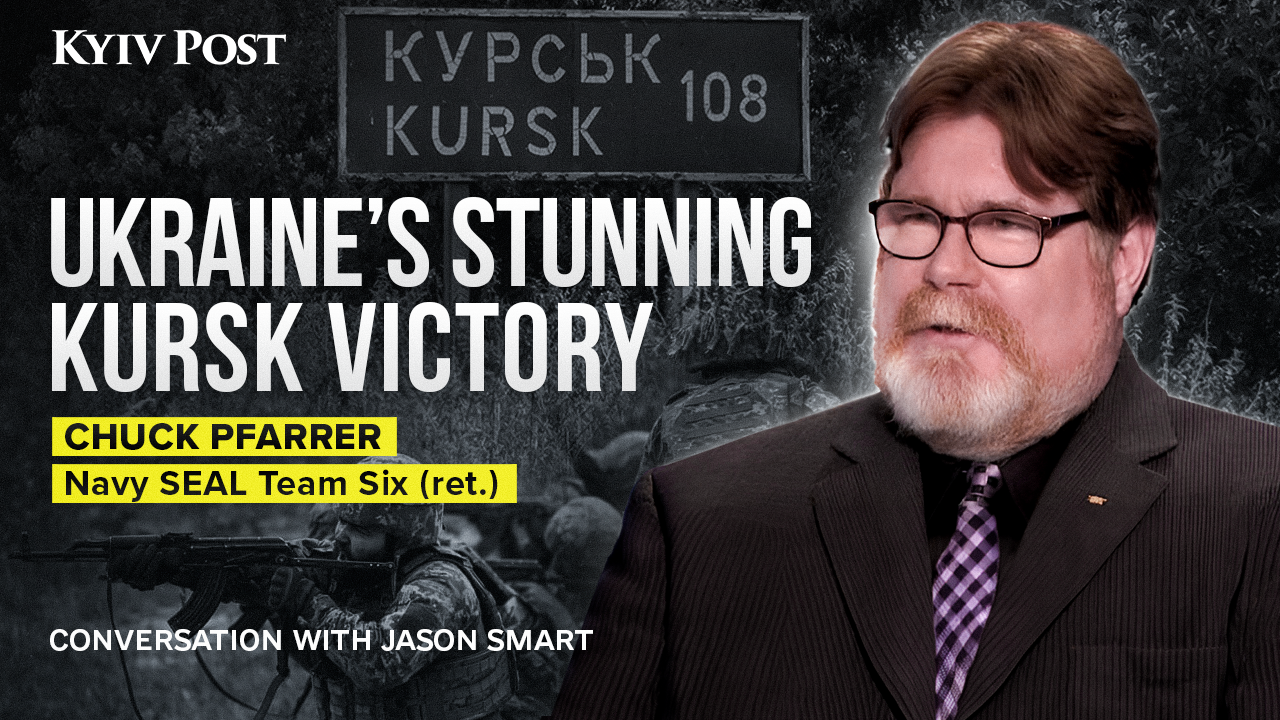On Thursday, May 16, Ukrainians once again celebrate Vyshyvanka Day. Vyshyvankas – traditional embroidered shirts – have long been symbols of Ukraine.
Kyiv Post interviewed celebrated Ukrainian designer Yuliya Magdych about vyshyvankas and more on the eve of Vyshyvanka Day.
JOIN US ON TELEGRAM
Follow our coverage of the war on the @Kyivpost_official.

How long does it take to make one Vyshyvanka? Are your vyshyvankas handmade?
It takes from two weeks to a month and a half to make one embroidered shirt, depending on the complexity of the design and the amount of detail.
We combine hand embroidery and machine embroidery, because one dress can have from 4 to 18 million stitches – so to embroider a dress like this by hand, you’d have to spend half your life embroidering.
What is the most difficult aspect of making vyshyvankas? What are the most and least expensive vyshyvankas that you make?
The most difficult part is the idea. Because people always think that everything in this area has already long ago been said – so we need to surprise!
The prices for our embroideries start from $180-280, but for exclusive orders, the price goes up in tandem with the complexity of the project and the materials used. The average check is $1,920.
If you compare the perceptions of vyshyvankas abroad and in Ukraine, 10 years ago and now, are there differences? If so, what would be the main differences?
Before, embroidery in Ukraine – not taking into account the western regions where I come from – was thought of as more exotic, a manifestation of nationalism.
I remember going to a party at university in ripped jeans and an embroidered shirt and being scrutinized like a museum piece. But now, it's an absolutely common outfit, from weddings to negotiations.

As for foreigners, we certainly overestimate the importance of vyshyvankas for foreigners, because they perceive them primarily as something whose only significance is its beauty. Those who are close to Ukraine understand that these are our national motifs.
However, for example, our clients from the Middle East say: “Oh, this is so similar to our national embroidery.”
We all, all nations, like in the movie Avatar, have intertwined roots. That's why all folk embroidery, costumes, and techniques are united – like the beating heart of Earth.
How has war affected the perception of Ukrainian designers abroad? Have they become more well-known?
At first, everyone was actively helping Ukraine abroad. In the first days of the war, we also put our stock for sale in America and Europe, to benefit the Armed Forces of Ukraine.
Then the active phase of assistance from abroad ended.
Of course, everyone expresses their condolences, but we understand that when it hasn't affected your home, you are very detached from the fact that there is a war in a foreign country.
For example, Syria has not been at the forefront of the global conversation. To summarize, I would not say that the war in our country has given us special advantages or opportunities.
Rather, it imposes additional educational responsibilities on us: to talk a lot about Ukraine, to give a lot of explanations about our history, culture, identity, and sometimes to prove that there really is a war.

Who among the politicians and influencers has worn your brand’s vyshyvankas? Who do you want to dress?
Catherine Zeta-Jones, Patricia Kaas, Kelly Osbourne, May Musk, Tony Blair, Dita Von Teese, as well as such famous influencers as Blair Eadie and Aureta have worn our vyshyvankas.
Have you made customized vyshyvankas? For example special orders from politicians, influencers? If you can please, tell us about your VIP customers.
Unfortunately, this is confidential information – no matter how much I would like to share it. But very often you can recognize them by their signature style.
How did the brand get started? Could you describe for us the evolution, from what the first works looked like to what they are now?
The brand started when I made a few vyshyvankas for myself and my friends.
There was no business plan at all, just word-of-mouth marketing.
The first product was a kaftan with embroidered sleeves, a traditional Ukrainian style. My goal was to create a comfortable traditional vyshyvanka.
And it just turned into an avalanche.
I couldn't come up with a name for about six or seven months, so we didn't even register an Instagram page.
And then, when it happened, our dresses were ordered from the Middle East, from Europe, and then Selfridges [an upscale department store in London] wrote to us that they wanted to sell us. And so, out of sea foam, our brand was born.

Where do brand designers take their inspiration from during war?
When the war started, it was very complicated for me to create something new. I would sit down at my desk to draw new designs and then throw all of them in the trash.
Usually, I don't need any additional incentives to be inspired. I really like history, old clothes, and national costumes.
In my work, I try to build a bridge between the past and the future.
Are there any plans to create a Kids' Collection? Because children are our future.
We have already created the Mother-Daughter collection and are actively creating children's clothes.
Kids start wearing our clothes in early childhood because parents often choose our outfits for the baptismal ceremony.
Children are truly our future. We put ourselves forward as a brand that broadcasts family as a joy and a fundamental, as is the custom in Galicia.
We are always very happy when our customers have children because there’s got to be 52 million of us [Ukraine’s population at the beginning of its independence was 52 million. Today it’s estimated at 37.9 million].
You can also highlight the text and press Ctrl + Enter




